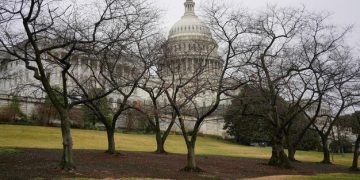The Future of Healthcare Reform: A Political Analysis of Proposed Changes in 2025

The Future of Healthcare Reform: A Political Analysis of the Proposed Changes in 2025 examines the potential political pathways and policy shifts that could reshape the US healthcare system, assessing impacts, viability, and areas of likely contention amid evolving political dynamics.
Navigating the complexities of healthcare reform requires a keen understanding of political landscapes and policy implications. This article delves into The Future of Healthcare Reform: A Political Analysis of the Proposed Changes in 2025, exploring potential shifts and their impacts on the US healthcare system.
Understanding the Current Healthcare Landscape in the US
To understand the future of healthcare reform, it is crucial to examine the existing framework. The current landscape is a complex mix of public and private insurance, regulations, and market forces.
Key Components of the Affordable Care Act (ACA)
The Affordable Care Act, enacted in 2010, has been a cornerstone of healthcare in the US. Let’s explore its key components:
- Expanded Medicaid Eligibility: The ACA aimed to broaden Medicaid coverage to include more low-income individuals.
- Health Insurance Marketplaces: These marketplaces provide individuals and small businesses with platforms to purchase health insurance plans.
- Essential Health Benefits: The ACA mandated that insurance plans cover a range of essential health benefits, ensuring comprehensive coverage for consumers.

The ACA’s implementation has been met with both success and challenges, leading to ongoing debates about its effectiveness and sustainability.
Political Dynamics Influencing Healthcare Reform in 2025
Political ideologies and power dynamics play a significant role in shaping healthcare reform. Understanding these forces is essential for predicting the future of healthcare in the US.
Partisan Divides on Healthcare Policy
Democrats and Republicans often hold differing views on healthcare policy. These partisan divides can impact the feasibility of proposed changes.
Democrats generally support government intervention to ensure access to affordable healthcare. They advocate for policies that expand coverage and protect consumer rights.
Republicans often favor market-based solutions to healthcare challenges. They prioritize individual choice, competition among insurers, and regulatory reform.
Political factors are likely to play a central role in determining whether significant healthcare reforms can be enacted in 2025.
Proposed Changes to Healthcare in 2025: A Detailed Look
Looking ahead to 2025, several proposed changes could reshape the US healthcare system. Examining these potential reforms is important for understanding the future landscape.
Expanding the ACA or Implementing “Medicare for All”
One potential change involves building upon the Affordable Care Act. This could include measures to increase subsidies, expand Medicaid eligibility, and strengthen consumer protections.
The Potential Role of Technology in Healthcare Delivery
Technology is poised to play an increasingly important role in healthcare delivery. Telemedicine, remote monitoring, and AI-driven diagnostics are just a few examples of how technology could transform healthcare.
These technological advancements have the potential to improve access to care, reduce costs, and enhance patient outcomes.
Examining the feasibility and potential impact of tech-driven healthcare solutions is essential for understanding the future of healthcare reform.

Economic Considerations of Healthcare Reform in 2025
Economic factors are critical in shaping healthcare reform. Understanding the costs, benefits, and financing mechanisms is essential for evaluating proposed changes.
Cost-Benefit Analysis of Proposed Reforms
Proposed healthcare reforms often involve significant economic implications. Evaluating the costs and benefits of these changes is crucial for policymakers and stakeholders.
- Impact on Federal Budget: Healthcare reforms can affect the federal budget through changes in spending, taxes, and economic activity.
- Effects on Private Sector: Proposed changes can impact private sector entities, such as insurance companies, pharmaceutical companies, and hospitals.
- Economic Growth and Productivity: Healthcare reforms can influence overall economic growth and productivity.
A thorough economic analysis is essential for making informed decisions about healthcare reform.
The Role of Public Opinion and Advocacy Groups
Public opinion and advocacy groups can influence healthcare reform efforts. Understanding their perspectives and influence is important for navigating the political landscape.
How Public Sentiment Shapes Policy
Public sentiment can play a significant role in shaping healthcare policy. Policymakers often consider public opinion when crafting and enacting healthcare reforms.
Public opinion is influenced by a variety of factors, including personal experiences, media coverage, and political messaging.
Healthcare advocacy groups work to raise awareness, mobilize support, and lobby policymakers to advance their agendas.
The interplay between public opinion and advocacy efforts can have a significant impact on the trajectory of healthcare reform.
Potential Challenges and Obstacles to Reform
Achieving meaningful healthcare reform is not without its challenges. Overcoming various obstacles is essential for advancing proposed changes.
Navigating Political Gridlock and Special Interests
Political gridlock and special interests can impede healthcare reform efforts. Overcoming these obstacles is crucial for enacting meaningful change.
Conclusion
Healthcare reform in 2025 is poised to be a complex interplay of political dynamics, economic considerations, and technological advancements. Understanding these factors is essential for all stakeholders as the US navigates the future of its healthcare system.
| Key Point | Brief Description |
|---|---|
| 💡 ACA Expansion | Measures to increase subsidies and Medicaid eligibility. |
| 💰 Economic Impact | Analysis of costs, benefits, and financing of reforms. |
| 🧑⚕️ Tech in Healthcare | Role of telemedicine and AI in improving care access. |
| 🗳️ Public Opinion | Influence of public sentiment on healthcare policies. |
Frequently Asked Questions (FAQ)
▼
The primary goals include expanding access to healthcare, improving the quality of care, and controlling healthcare costs. Reforms often seek to make healthcare more affordable and accessible for all citizens.
▼
Technology could enhance diagnostics, enable remote patient monitoring, and improve data management. AI-driven solutions may lead to personalized treatment plans and greater efficiency in healthcare delivery.
▼
Political parties often have distinct views on healthcare. Democrats may favor government intervention to expand coverage, while Republicans might prioritize market-based solutions and individual choice in healthcare.
▼
Economic factors include the cost of insurance, the impact on federal and state budgets, and the effect on economic growth. Reforms must address costs and ensure sustainable financing for healthcare systems.
▼
Public opinion can significantly influence policy-making. Policymakers often consider public sentiment when designing and implementing healthcare reforms to gain support and address public concerns.
Conclusion
In conclusion, the future of healthcare reform in 2025 is a multifaceted issue shaped by technology, socio-political factors, and economic implications. Policymakers, stakeholders, and citizens must engage constructively to navigate this evolving landscape effectively and ensure equitable, affordable, quality-driven healthcare solutions for all.





